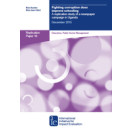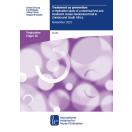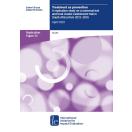
Fighting corruption does improve schooling: a replication study of a newspaper campaign in Uganda
3ie Replication Paper 10
Supply chain inefficiencies can hinder public service delivery. Resource capture via corruption is one such leakage. In this paper, Maria Kuecken and Marie-Anne Valfort conduct an internal replication of Fighting Corruption to Improve Schooling: evidence from a Newspaper Campaign in Uganda by Reinikka and Svensson (2005). In the mid-1990s, only 20 cents on the dollar of capitation grants allocated for primary education actually reached schools in Uganda. Reinikka and Svensson (2005) show that bottom-up governance reforms improved head teachers' awareness of the grant programme and substantially reduced grant capture. This replication study examines the robustness of Reinikka and Svensson's two primary contributions: how an anti-corruption newspaper campaign improved the receipt of capitation grants and how this additional funding may have contributed to subsequent increases in enrolment.
In the pure replication, Kuecken and Valfort confirm that the newspaper campaign reduced the capture of capitation grants and improved enrolment. The measurement and estimation analysis examine the robustness of these findings to alternative methods of measuring enrolment. The replication researchers find that the intervention influenced enrolments only when they use a more accurate enrolment measure introduced by Reinikka and Svensson (2011). The replication researchers also identified differences from the original paper in the relationship between capture due to the newspaper campaign and improved learning outcomes. Finally, Kuecken and Valfort demonstrate suggestive evidence that the newspaper campaign generated a fairer distribution of teachers across rural and urban schools.

